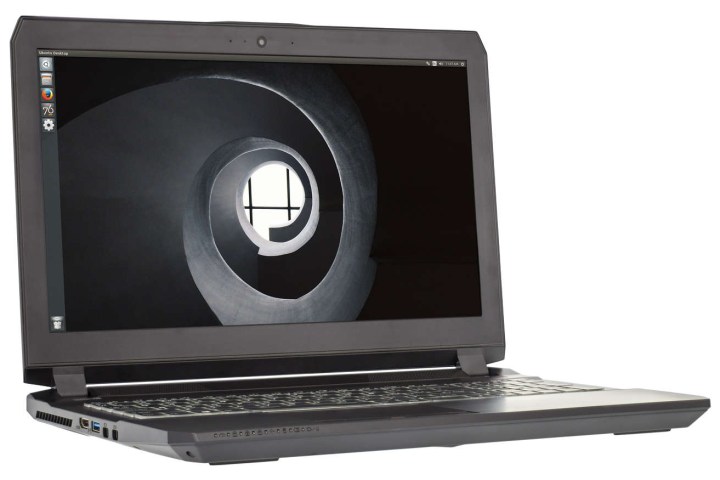
If you’re not familiar with these three display types, TN stands for Twisted Nematic and is the oldest of the three. It consumes less power while offering the brightest screen and fastest response times, making it perfect for gaming. IPS stands for In-Plane switching, and is newer than the TN panel technology, providing richer colors and better viewing angles, making it ideal for digital media creation.
As for HiDPI, that’s short for High Dots Per Inch, and is the foundation of Apple’s “Retina” display. It focuses on providing an extremely high resolution on a small screen while retaining sharp images and text. The display tech essentially crams in a higher number of smaller pixels per inch than the previous two mentioned above, and they are nearly impossible to see when examining the screen up close.
That said, configuring the 15.6-inch Oryx Pro laptop with the new screen option will cost extra. The base configuration comes with the TN panel with a 1,920 x 1,080 resolution. The IPS panel costs $95 extra and the HiDPI panel costs an additional $249. On top of that, customers wanting to configure the laptop with Nvidia’s GTX 1070 graphics chip must pick either the IPS or HiDPI panel. Otherwise, the laptop defaults to the GTX 1060 chip.
Here are the hardware options for the 15.6-inch and 17.3-inch models:
| Orynx Pro | |
| Operating system: | Ubuntu 16.04.01 LTS 64-bit Ubuntu 16.10 64-bit |
| Display: | 1080p LED-backlit 1080p IPS LED-backlit 4K HiDPI LED-backlit (not available on the 17.3-inch model) |
| Processor: | Intel Core i7-6700HQ (3.5GHz) Intel Core i7-6820HK (3.6GHz) |
| Memory: | 8GB, 16GB, 32GB, and 64GB dual-channel DDR4 @ 2,400MHz |
| Graphics: | GeForce GTX 1060 (6GB) GeForce GTX 1070 (8GB) |
| Primary storage (M.2): | 128GB, 250GB, or 500GB M.2 SSD 256GB, 512GB, or 1TB NVMe M.2 SSD |
| Secondary storage (M.2): | None 128GB, 250GB, or 500GB M.2 SSD |
| Third storage (2.5-inch): | None 1TB 7,200RPM HDD 1TB 5,400RPM Hybrid (8GB SSD) 2TB 5,400RPM HDD 250GB, 500GB, 1TB, 2TB, and 4TB SSD |
| Ports: | 2x USB 3.1 Type-C 3x USB 3.0 Type-A SD card reader 1X HDMI 2x Mini DisplayPort 1x gigabit Ethernet 1x Microphone jack 1x S/PDIF 1x Headphone jack |
| Audio: | 2x speakers International headphone amplifier, Hifi DAC (GTX 1070 models only) |
| Webcam: | 1080p HD |
| Battery: | 60 watt hours, Li-Polymer |
| Input: | Multi-touch pad, multi-color backlit keyboard |
| Connectivity: | Wireless AC (Intel) |
In addition to selecting the IPS or HiDPI panel to unlock the GTX 1070 option, the company suggests that customers choose the IPS or HiDPI display and the GTX 1070 graphics chip if they select the Core i7-6820HK processor. Different parts unlock specific hardware options in the configuration tool, so customers will have to fool around with it until they get the desired balance between price and performance.
Pricing for the Oryx Pro starts at $1,500, but as shown above, the new 4K HiDPI display option is only offered for the 15.6-inch model. To configure yours now, head here and have fun shopping!



